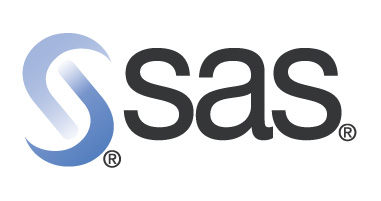SAS targets insurance, retail and telecoms with new analytics tools
Analytics for insurance, retail and telecoms will predict the right products and aid regulation.

Business analytics specialist SAS today announced a series of vertical market extensions to its suite of tools.
Focusing on insurance, retail and telecoms, the new tools are intended to help businesses reduce risks and increase revenues.
Increased regulation in the insurance market, including the EU's forthcoming Solvency II, means that insurance companies will need to control operational risk. SAS Enterprise Risk Management for Insurance builds on tools developed for Basel II compliance, and implements a data architecture specifically designed to work across the insurance industry. The system will measure and manage regulatory and economic capital, as well as providing risk management tools and risk-adjusted performance management. SAS will release modules over the next three years starting with tools to improve access to data and the quality of that data, followed by a data accelerator and finishing with a data integration bundle to help financial institutions prepare for the legislation.
The Price Plan Optimisation for Telecommunications is designed to help operators reduce the number of pricing plans they offer for individual and bundled voice, data and entertainment services. The race to keep up with new plans launched by competing networks leads to far too many rates, which cause confusion for customers and customer support teams alike, says global marketing manager for telecoms Ken King. "Providers want to compete on product not on price - look at the iPhone. But amazing is not the word I think of when my wife opens her bill every month because she can't understand it and she calls up to try and get the best deal.
"The billing team can't keep up; they say by the time they have a new plan implemented there's another new plan to deal with. The problem is that the systems are enormously complicated with millions of lines of code in legacy systems, in multiple systems because of acquisitions, plus millions of customers with affinities with the businesses and new products and content services creating a lot of confusion. That sounds to us like a lot of data sources from disparate silos around the enterprise and a lot of constraints, and what we have is a constraint-based optimisation platform."
Stores could be losing up to 25 per cent of potential sales because they don't have the right product, colour or size in stock, according to Alexi Sarnevitz, senior director for global retail strategy at SAS. He says the new version of Demand Forecasting for Retail aims to predict "what items to carry in each store and for each product in a store how many you should have, what price to sell them at, where to put them in the store and when to change them out for something else, by using information on previous promotions, the change in the seasons, even the weather."
As well as improving sales, a more accurate forecast will allow stores to predict what staff will be needed when. Because Demand Forecasting will be a common forecasting platform for the whole business, Sarnevitz claims that it will deliver "double digit increases in sale inventory takeouts and 2-5 per cent in operating margins".
Sign up today and you will receive a free copy of our Future Focus 2025 report - the leading guidance on AI, cybersecurity and other IT challenges as per 700+ senior executives
SAS has also been increasing government revenue from retail in the Philippines, says chief executive and founder Dr Jim Goodnight. "They were coming up short on tax collections after they introduced a retail tax; the merchants were collecting the tax but some of them were neglecting to send it in. We worked on them with a scheme where when you bought something and paid the tax you sent in an SMS and that was used in a lottery where the winner got some large prize. We helped improve their budget by over seven million pesos."
-
 TPUs: Google's home advantage
TPUs: Google's home advantageITPro Podcast How does TPU v7 stack up against Nvidia's latest chips – and can Google scale AI using only its own supply?
-
 Microsoft Excel is still alive and kicking at 40
Microsoft Excel is still alive and kicking at 40News A recent survey found Gen Z and Millennial finance professionals have a strong “emotional attachment” to Microsoft Excel